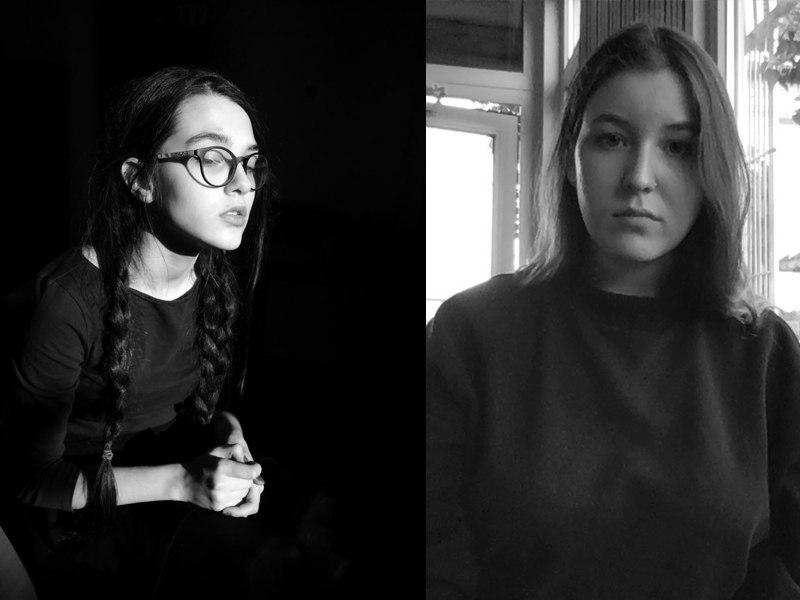Coordinate system
Tsekh Otdelki
Opening of the exhibition on April 22 at 19.00
X, Y, Z - coordinate axes in geometry, motion vectors, multiplications and reductions. The authors of the art works of this exhibition talk about formal issues, leaving interpretations to the will of the viewer.
Alisa Kolevatykh talks about individuality and variety, sample and circulation - using the example of the old method of printing, etching on a metal board. The artist exposes the board, the matrix - as a source of copies. The prints, which traditionally should be of standard quality, are fundamentally different here. Sometimes prints are even brighter than the matrix, or become pale shadows. The issue of right and wrong imprint seems to be purely technological - but it is deviations from the norm that create individuality. There is also a scale - the phenomenon of a huge transparent figure in the center of the exposition. And through QR codes on the walls of the exhibition, you can go to the shadows of the audience in augmented reality, it’s like those who were here before us, or will come later - the temporary coordinates of the invisible presence, and we will unite with those who are not physically nearby.
Daria Glushko explores the city as a paradoxical environment for human existence, with all its mistakes and offshoots from the norm. The artist's gaze is drawn to such things as "hosting", in her interpretation - photo prints of signs of closed establishments. It also makes official information available to everyone, but no one is interested in, by hanging documents about their plans on the facades of homeless houses. An important vector is Darya Glushko’s study of the very recent history of her hometown, Penza, in which the only wooden planetarium building in Europe was deconstructed in 2021. Only parts of the exhibits remained, which the artist saw in storage wrapped in black garbage bags. These models inspired her to create sculptures in which space goes into oblivion, and the "victory over the sun" of the futurists does not seem so positive.
Curator: Diana Machulina
 The artist Alisa Kolevatykh (b. 2000, Moscow), working in various techniques, from embroidery to video art, from objects to computer reality, introduces the foreign into everyday life, making the figure of a person, generalizing to a sign. Loneliness in the crowd becomes even more acute. Using AR technologies, Alice fills the void with a presence in which a person can delegate their duties to virtual entities.
The artist and art critic Darya Glushko (b. 1998, Penza) works with the perceptual variability of knowledge systems: for example, changes in one concept in explanatory dictionaries over the centuries, comparison of natural science research with folklore ornament. In her book The City as a Paradox (2021) and her work as an artist, Daria explores the city as a communication field, a perceptual aberration game of information hide and seek. Space for the artist - in addition to the similarity of the systems of the universal, scientific scale and the noosphere, also her personal biography - the history of the Penza Planetarium.
Both artists are students of the HSE School of Design, 4th year bachelor's degree, profiles "Artist and Curator" and "Design and Contemporary Art".
The artist Alisa Kolevatykh (b. 2000, Moscow), working in various techniques, from embroidery to video art, from objects to computer reality, introduces the foreign into everyday life, making the figure of a person, generalizing to a sign. Loneliness in the crowd becomes even more acute. Using AR technologies, Alice fills the void with a presence in which a person can delegate their duties to virtual entities.
The artist and art critic Darya Glushko (b. 1998, Penza) works with the perceptual variability of knowledge systems: for example, changes in one concept in explanatory dictionaries over the centuries, comparison of natural science research with folklore ornament. In her book The City as a Paradox (2021) and her work as an artist, Daria explores the city as a communication field, a perceptual aberration game of information hide and seek. Space for the artist - in addition to the similarity of the systems of the universal, scientific scale and the noosphere, also her personal biography - the history of the Penza Planetarium.
Both artists are students of the HSE School of Design, 4th year bachelor's degree, profiles "Artist and Curator" and "Design and Contemporary Art".
